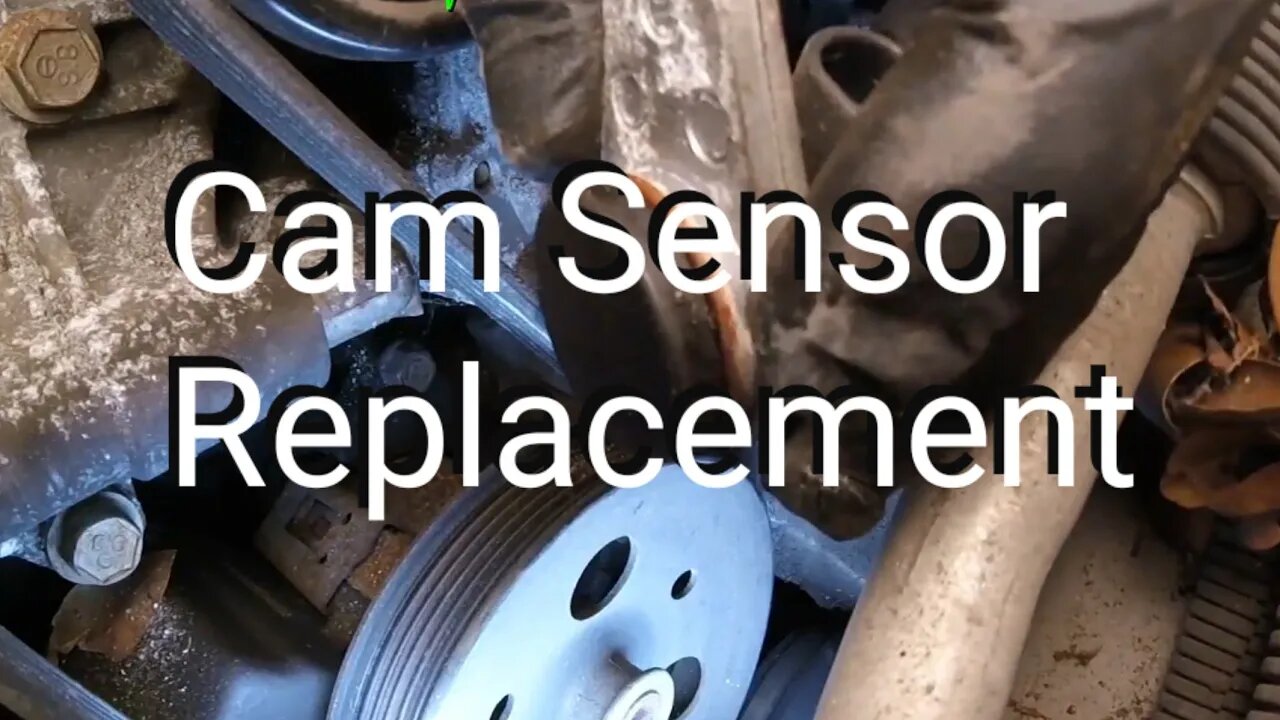Premium Only Content

Camshaft Position Sensor Replacement GM 3.8L Series 2
In this video I'll demonstrate how to replace a camshaft position sensor on a GM 3.8L series 2 V-6. The vehicle featured in this video is a 2001 Pontiac Bonneville. Please verify in your repair manual if this procedure is the same for the GM 3.8L series 2 V-6 you are working on. There may be a few out there that the removal and replacement procedure may be different. Verify that the procedure shown in the video is the same for your vehicle.
Do note: If your vehicle has a diagnostic trouble code or codes pertaining to the camshaft position sensor it will be necessary to erase these codes after the repair. The codes can be erased by disconnecting the negative battery cable from the battery for 10 minutes. (Of coarse if you followed the directions given in the video you would have already disconnected the negative battery cable before beginning the replacement procedure and the codes should be erased by the time the sensor is replaced and the negative cable is reconnected.)
As mentioned in the video, it is recommended to disconnect the negative battery cable before replacing the sensor. ***BE SURE YOU HAVE YOUR RADIO CODE BEFORE DISCONNECTING YOUR BATTERY CABLE*** (the code should be in your glove compartment in your owners manual or information packet) The radio may not work if this code is not entered into the radio after the battery has been disconnected. Locate the code and be sure you have it before going forward with repairs.
Of course, you will need to reconnect the negative battery cable end after the sensor is replaced. (I'm sure you would have figured that out) :)
Also: Its not a bad idea to rotate the engine and verify the trigger or magnet is not missing from the cam sprocket. On some vehicles the trigger or magnet can fall out. You'll need a mirror and a flash light to verify this. Repair as needed. This video does not go into this as it is not the purpose of the video.
DISCLAIMER
Barbour's Auto Help is not responsible for any damage or personal injury incurred in the process of performing any auto repairs done by you the viewer. Automotive repair is extremely dangerous. Repair your vehicle at your own risk. It is the viewers responsibility to verify all information and procedures as outlined in YOUR REPAIR MANUAL AND OWNERS MANUAL FOR YOUR VEHICLE. Owning and using a repair manual suited for the vehicle you are working on is essential for correctly and safely performing ANY repair to said vehicle. Always wear safety glasses and heed all instructions for use applicable to any piece of equipment you may use. Due to circumstances out of the control of Barbours Auto Help, Barbours Auto Help makes no guaranty that by the use of the information given in this video a quality repair will be made. Barbour'sAutoHelp makes no guaranty that the information provided is totally complete, syncronized and accurate. Verify everything using an appropriate repair manual. Follow the repair manual over this video's content. You can do it. Do it right and do it safely.
Repair your vehicle at your own risk! Barbour's auto help does not guaranty a proper repair using these techniques.
-
 1:40:08
1:40:08
Precision Rifle Network
1 day agoS4E2 Guns & Grub - Training Vs. Competition
25.2K -
 58:27
58:27
Flyover Conservatives
1 day agoGarrett Ziegler Breaks Down Special Councilor’s Report on Hunter Biden. Insights for Trump’s Top Picks. | FOC Show
53.4K2 -
 44:54
44:54
Steve-O's Wild Ride! Podcast
14 hours ago $9.73 earnedMark Wahlberg Threatened To Beat Up Jackass Cast Member - Wild Ride #251
105K11 -
 1:13:34
1:13:34
Josh Pate's College Football Show
8 hours ago $1.73 earnedCFB Dynasties & Villains | Marcus Freeman OR Ryan Day | 2025 Sleeper Teams | Cole Cubelic Joins
32.1K -
 1:00:26
1:00:26
The StoneZONE with Roger Stone
6 hours agoSHOCKING NEW TAPE PROVES LBJ KILLED JFK! | The StoneZONE w/ Roger Stone
52.3K23 -
 1:44:33
1:44:33
ObaTheGreat
8 hours agoCrypto vs The World w/ Oba The Great And YaBoySkey
40.2K3 -
 DVR
DVR
VOPUSARADIO
2 days agoPOLITI-SHOCK! "COUNTDOWN TO TRUMP" & THE GLOBALISTS BURNING IT ALL DOWN..LITERALLY!
15.8K1 -
 44:34
44:34
Kimberly Guilfoyle
11 hours agoCountdown to Inauguration Day, Plus California in Crisis, Live with Joel Pollack & Roger Stone | Ep. 189
130K57 -
 1:32:41
1:32:41
Redacted News
11 hours agoBiden's 'SNEAKY' plot to slow down Trump REVEALED | Redacted w Clayton Morris
143K241 -
 56:32
56:32
Candace Show Podcast
10 hours agoOH SNAP! Justin Baldoni Is Now Suing Blake Lively and Ryan Reynolds PERSONALLY | Candace Ep 134
122K206